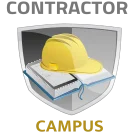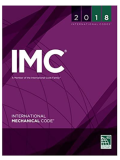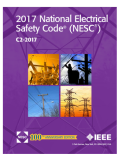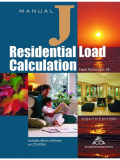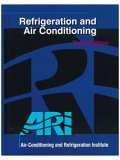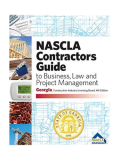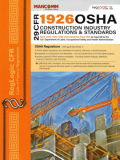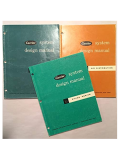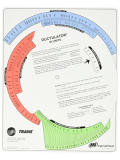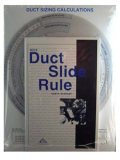Georgia Conditioned Air Class I Restricted Contractor License
The Conditioned Air Class I Restricted Contractor License allows you to do the following work on conditioned air systems or equipment not exceeding 175,000 BTU of heating and 60,000 BTU of cooling:
- Installation
- Maintenance
- Repair
How to Get the Conditioned Air Class I Restricted Contractor’s License in Georgia?
Select the appropriate company type if applying as a Qualified Licensee:
- Sole Proprietorship
- Limited Liability Company or Corporation
- Partnership or Limited Liability Partnership
Submit proof to show completion of the educational requirements:
- EPA card copy showing a type II or higher certification
- Diploma in Engineering Technology or a similar electrical field or any certificate that shows completion of a vocational/technical school program
- Copy of a certificate obtained from a board-approved heat loss and gain and duct design course issued by a board-approved provider or proof of completion of the ACT107 from a Georgia vocational/technical school
- Transcript of a diploma or certificate program completed through a Georgia vocational or technical school (may be credited as part of the required experience as per Board Rule 121-2-.03(4))
Meet the experience requirements and provide a detailed description of previous conditioned air work performed, including the applicant’s duties and employer’s information:
- One year performing work as a service technician (including an EPA license)
- Two years of experience as a lead mechanic performing residential installation
- Proof of four years of installation experience
- One year of work as a residential supervisor and a Board-approved heat loss and gain and duct design course
Collect the following supporting documents:
- At least three reference forms filled out by different employers. The form can be found in the Application by Examination packet
- Secure & Verifiable Documents
- Affidavit of Citizenship
- Qualified Alien documents (If applicable)
- Send the completed application form, documentation, and applicable fees to the Division at:
Division of Conditioned Air Contractors
237 Coliseum Drive,
Macon, GA 31217 - Expect the Board to review the application. If approved, the Board will contact AMP/PSI© with the list of applicants for examination, and the candidate must then await further instructions and information from AMP/PSI© regarding the test schedule. Allow seven business days from notice of the Board’s approval to receive the email from AMP/PSI©
- Take and pass the Conditioned Air Examination for the license type chosen, with a minimum score of 70%
- Access the Board’s Professional Licensing website to check the application status. Candidates should also be able to see the test results within ten days from the date the Board receives the scores
For first-time applicants seeking a license in Georgia, take and pass an examination. But if the applicant is a license holder, the license can be obtained through reciprocity, reinstatement, or renewal. If looking to reinstate the license after three years or more, candidates must complete the Application by Examination. The Conditioned Air Division used to have reciprocal agreements with Texas and South Carolina, but those agreements are currently under review. The only state that currently has reciprocity with the Conditioned Air Division is Louisiana, through the Louisiana State Licensing Board for Contractors. Finally, if a contractor wants to renew their license, it can be obtained by following the Georgia Online Licensing site instructions.
Georgia Conditioned Air Class I Restricted Contractor License Exam Prep Course
Georgia Conditioned Air Class I Restricted Contractor License Exam
Below is all the information related to the trade exam, including the official reference list.
Georgia Conditioned Air Class I Restricted Contractor Trade Exam
- Testing Method: Computer/based testing; open book
- Testing Company: PSI©
- Number of Questions: 120
- Types of Questions: Multiple Choice
- Time Allowed: 7 hours
- Minimum Passing Score: 70 Questions (70%)
- Subjects Involved (No. of Questions):
- Pretest questions (20) *Pretest questions do not affect the score
Regulations, Laws, and Administrative Functions (8)
Comply with Laws (1)
- Workers Compensation
- Unemployment insurance
- Employer’s tax guide (circular E)
- Georgia Construction Industry Licensing Board (complaint procedures, function of, renewal, etc.)
- State sales and use tax
- Business license
- Lien rights
- Americans with Disabilities Act (ADA)
Comply with Regulations (2)
- Obtain necessary conditioned air permits and inspections
- Code of Federal Regulations, Title 29, Part 1926 (OSHA)
- Standard Mechanical Code
- Underwriter’s Laboratory (UL) or other appropriate certification
- National Electrical Code (NEC)
- Standard Gas Code
Comply with Administrative Requirements (5)
- Insurance: liability, property damage, auto, etc.
- Financing and cash flow
- Bookkeeping and accounting
- Accident or incident reports
- Contracts and purchase orders
- Inventory equipment, materials, and supplies
- Scheduling and project management
System Design (55)
- Determine job specifications in accordance with comfort and Code requirements
Determine space-load requirements (BTU gain-loss)
- residential
- commercial
- Determine space airflow requirements
- Select equipment according to design requirements
- Determine type, size, and location of registers
- Determine location for interior and exterior equipment
- Determine type, size, and routing of duct system (including ventilation air intake and exhaust ducts)
- Determine location and installation requirements for fire/smoke dampers, firestats, and smoke detectors
- Determine flue size, type, and clearances
- Select duct construction
- Determine location and size of combustion air intake
- Determine thermostat and/or humidistat location
- Determine if available electrical service is adequate
- Determine if structure will support type of mounting required for equipment
- Determine layout and size of refrigerant piping
- Determine location of condensate drain
- Determine size and routing of fuel piping (oil, natural gas, LP gas)
- Estimate job costs and prepare job proposal/contract
Installation (25)
Equipment (2)
- Prepare equipment foundation/base
- Install equipment vibration isolator
- Install roof curb
- Install self-contained unit: wall mount, roof mount, pad mount, thru wall
- Install humidifier
- Install filter/air cleaner
- Install evaporator in existing system
- Install electric heating coil in existing system
- Install condensate pump
- Install gas furnace
- Install oil furnace
- Install heat pumps (all types)
- Install gas combination heating and domestic hot water system
- Install air and water cooled system
Duct System (4)
- Install and/or modify existing plenum for evaporator installation
- Install and/or modify existing duct for duct-mounted accessories installation (air cleaner or damper)
- Install branch duct takeoff from main using round metal duct and fittings
- Install duct (rectangular/flexible) and fittings
- Install manual balancing (volume) damper
- Install register or grill
- Install outside air intake with screen
- Install smoke- and heat-actuated (fire) damper
- Install powered damper with actuator
- Install flexible connector between metal duct and equipment
- Install duct insulation (rigid board, wrap, liner, etc.)
- Install dryer vents
- Install bathroom fan vents
- Install residential and commercial range hoods and vents
Flue Venting (6)
Install gas, oil, or all-fuel furnace vent and damper system:
- PVC
- Type B (double wall)
- Type L (oil flue vent)
- Type BW
- single wall
- Install barometric (draft regulator) damper
- Install draft-induced fan
- Install combustion air vents
Gas Piping and Tubing (3)
Install gas piping according to code:
- Copper
- Wrought steel
- Corrugated stainless steel
- Plastic
- Test for gas leaks
- Install gas piping supports and identification
Refrigerant Piping, Tubing, and Accessories (3)
Install refrigerant piping according to manufacturer’s recommendations and per code:
- Solenoid valve
- Hand valve
- Suction-line accumulator
- Filter dryer
- Sight glass
- Oil separator
- Check valve
- Expansion valve
- Liquid receiver
- Flexible vibration absorber
- Service valve
- Install refrigerant pipe insulation according to manufacturer’s recommendations and per code
- Leak test system according to manufacturer’s recommendation and per code
- Evacuate refrigeration circuit (new or contaminated system)
Condensate Piping, Tubing, and Accessories (1)
Install condensate piping according to the manufacturer recommendations and per code:
- Primary drain
- Secondary drain
- Secondary drain pan
- Float switches
- Drain and piping supports
- Install condensate pipe insulation according to manufacturer’s recommendations and per code
Electrical Control Systems (3)
- Reverse rotation of 3-phase motor
- Determine circuit breaker and wiring sizes
- Install equipment control service panel
- Install circuit breaker in service panel
- Install electrical conduit
- Install wiring in conduit
- Install low-voltage cable
- Connect electrical power to equipment
- Connect electric duct heater
- Connect humidifier
- Install room thermostat or humidistat
- Install outdoor, duct-mounted, or equipment-mounted thermostat
- Install firestat and smoke detector
- Connect electronic filter
- Install electrical disconnects
Place System in Operation (3)
- Place system in operation according to code and manufacturer’s recommendations
- Charge and adjust refrigerant system according to manufacturer’s recommendations (A/C and heat pump)
- Check and test system operating conditions as per design criteria and manufacturer’s recommendations
- Calibrate thermostat
- Balance duct system for correct CFM
- Adjust fresh-air intake as per code
- Adjust bypass and relief damper
- Check motor current (amps)
- Check motor speed and rotation
- Adjust compressor start-delay timer
- Check bearings for lubrication
- Purge air from gas line and adjust gas pressure
- Adjust burner primary air on oil and gas furnace
- Adjust pilot flame and pilot igniter
- Adjust direct spark igniter
- Determine furnace efficiency through combustion analysis
- Test for gas leaks
- Adjust burner oil system
- Check furnace draft
- Test flame-proving and safety control
Maintain and Repair System (12)
General (7)
- Determine needed system maintenance and repairs
- Check refrigerant charge
Locate leak in refrigerant circuit:
- Using electronic leak detector
- Using nitrogen pressurization
- Using halide leak detector
- Using soap solution
- Repair leak in refrigerant circuit
- Charge air-conditioning system per manufacturer’s directions
- Add oil to compressor
- Check thermostat cycles
- Check heat pump reversing valve operation
- Install pressure switch (high, low, and oil)
- Clean coils, filters, humidifier, and fan
- Straighten coil fins
- Replace fan bearing
- Replace V-belt and sheave
- Test hermetic compressor
- Test compressor oil for acid and moisture
- Replace compressor with or without service valves
- Replace fan blade or wheel
- Replace evaporator or condenser coil
- Replace gas regulator
- Replace gas orifice
- Replace gas burner
- Replace gas heat exchanger
- Replace gas safety valve
- Replace gas valve
- Replace diaphragm-type valve
- Replace millivolt-powered safety valve
- Replace millivolt-powered gas valve
- Replace pilot burner
- Replace oil burner (chassis and air tube)
- Replace burner nozzle
- Replace oil-burner motor
- Replace fuel oil pump
- Replace fuel-cutoff valve
- Replace fuel-filter cartridge
- Clean system after burnout
- Clean furnace and components
- Replace ignition electrodes
- Operate recover, recycle, reclaim equipment
- Adjust temperature switch
Electrical (5)
- Determine problem in air conditioning electrical system
- Measure voltage, amperage, and resistance in electrical circuit
- Measure capacitance of capacitor
- Make electrical connection: crimp, screw terminal, solderless splice, solder
- Analyze electronic circuit containing power source, control card, sensor, and control device
- Connect motor and/or start capacitor
- Replace transformer
- Install/replace hard-start kit on hermetic compressor
- Replace magnetic coil in motor starter
- Install/replace motor contactor and/or relay
- Replace heat-pump defrost timer and/or defrost thermostat
- Connect pressure switch
- Install/replace anti-short cycle timer
- Replace control switch (fan, temperature-limit, or fan and limit combination)
- Connect gas valve
- Replace pilot safety switch
- Replace glow-coil assembly
- Replace door switch (panel switch)
- Replace thermocouple or thermopile
- Replace flame-sensing electronic sensing device
- Install/replace spark-ignition pilot lighter, direct spark igniter system, or hot surface ignition
- Troubleshoot electronic ignition control system
- Replace and/or install starting or run capacitor
- Replace motor overload protector and/or electric heater element
- Replace electronic air cleaner ionizing wire
- Replace solid-state control board
- Replace solenoid coil
- Install/replace crankcase heater
- Install/replace oil-line heat tape
- Replace electric-heater sequencer
- Attempt to start stuck hermetic compressor
- Replace fan motor
- Replace defrost heater
- Adjust defrost cycle on heat pump
- Adjust refrigerant superheat
- Adjust hot-gas bypass
- PSI© Conditioned Air Class I Restricted Official Content Outline
Georgia Conditioned Air Class I Restricted Contractor Book Set
This set of books includes all required references for the Conditioned Air Class I Restricted exam. Orders placed before 2 PM are shipped the same day via UPS and a tracking number is emailed before 3 PM.
GEORGIA CONDITIONED AIR CLASS I RESTRICTED - BOOK SET WITHOUT TABS INCLUDES ALL BOOKS FOR TRADE AND BUSINESS EXAMS
Sales price: $1,291.05-
GEORGIA CONDITIONED AIR CLASS I RESTRICTED - BOOK SET WITH TABS INCLUDES ALL BOOKS FOR TRADE AND BUSINESS EXAMS
Sales price: $1,391.05
Georgia Conditioned Air Class I Restricted Contractor Exam Books
Books Allowed in Testing
-
r1071 1$20.00$20.00
-
For the most current mechanical codes that ad...International Mechanical Code 2018
r171 1$104.50$104.50 -
The Code covers a broad range of areas includ...National Electrical Safety Code 2017
r199 1$284.40$284.40 -
This is a used book, used book pricing has be...Manual D Residential Duct Systems
r179 1$130.79$130.79 -
MJ8AE, an abridged version of Manual J, provi...Manual J Residential Load Calculation
r180 1$217.41$217.41 -
This is a used book, used book pricing has be...Refrigeration and Air Conditioning
r261 1$20.00$20.00 -
The Georgia NASCLA Contractors Guide to Busin...Georgia NASCLA Contractors Guide to Business
r688 1$109.00$109.00 -
OSHA (CFR 29 Part 1926) is the leading safety...CFR (OSHA) Title 29 Part 1926 (1903 1904 1910
r84 1$30.00$30.00 -
This Manual is used for the Georgia Condition...Carrier System Design Manuals (1-3)
r1074 1$212.37$212.37 -
For use and reference by designers, architect...Flexible Duct Performance and Installation St
r742 1$20.00$20.00 -
The Trane Ductulator is a tool used for duct ...Trane Ductulator
r299 1$30.00$30.00 -
This didactic tool provides instruction on th...ACCA Duct Slide Rule
r8 1$51.83$51.83 -
The IECC now exempts log homes and has reduce...International Energy Conservation Code 2018
r1671 1$60.75$60.75
